

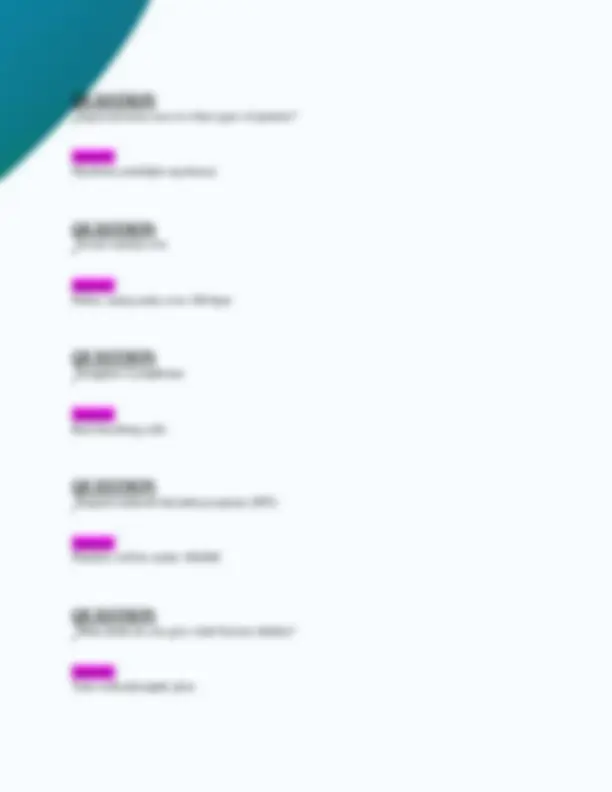
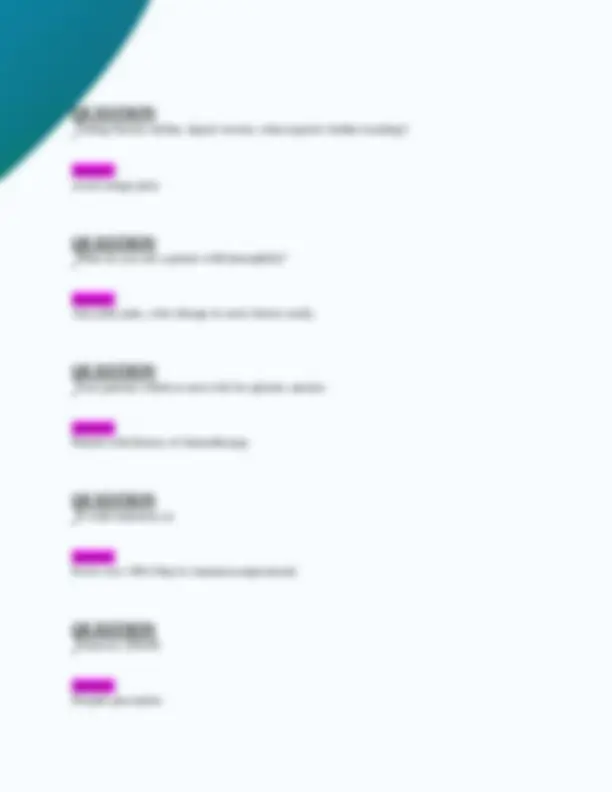
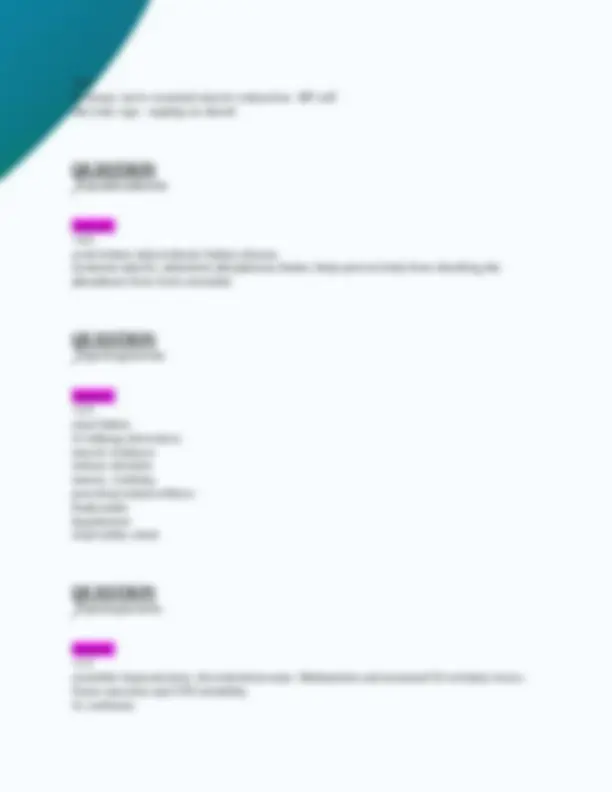
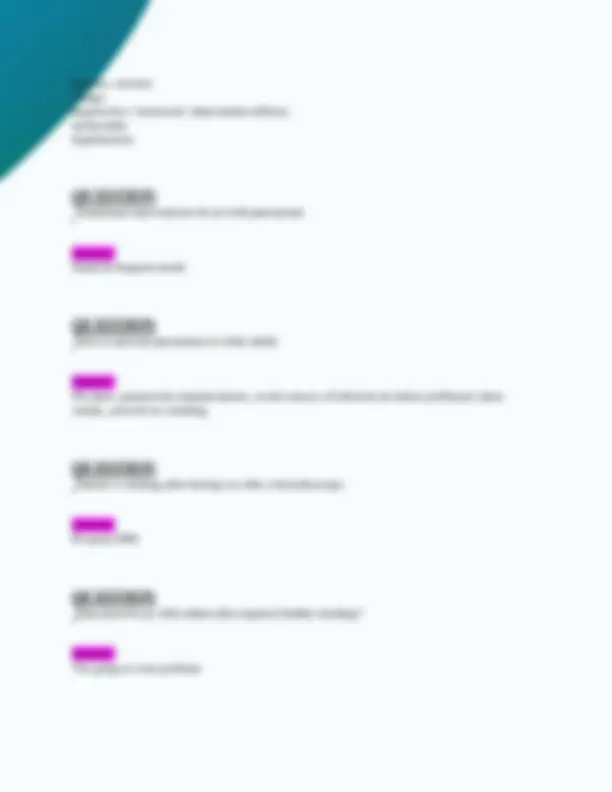
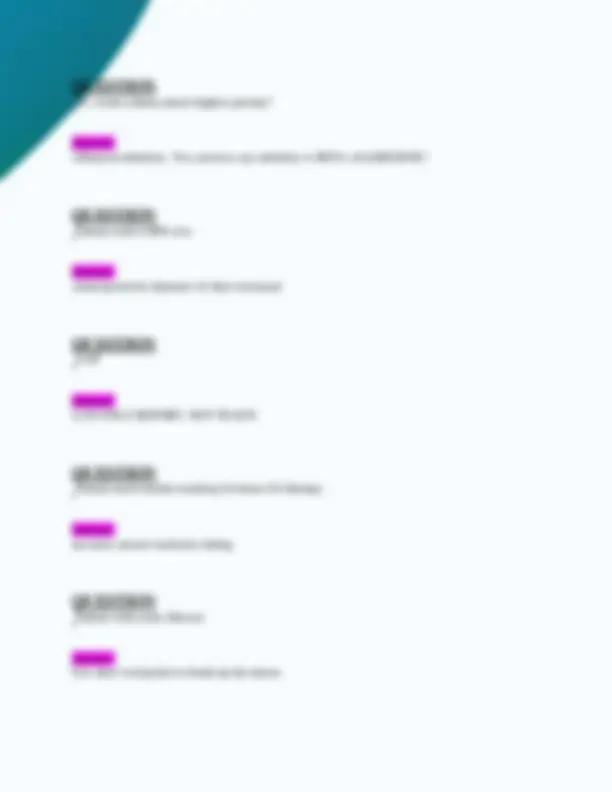
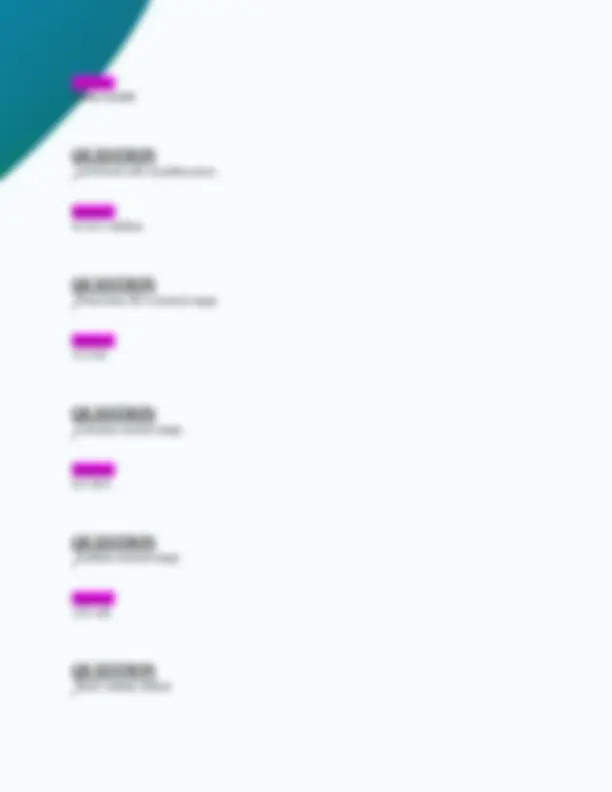
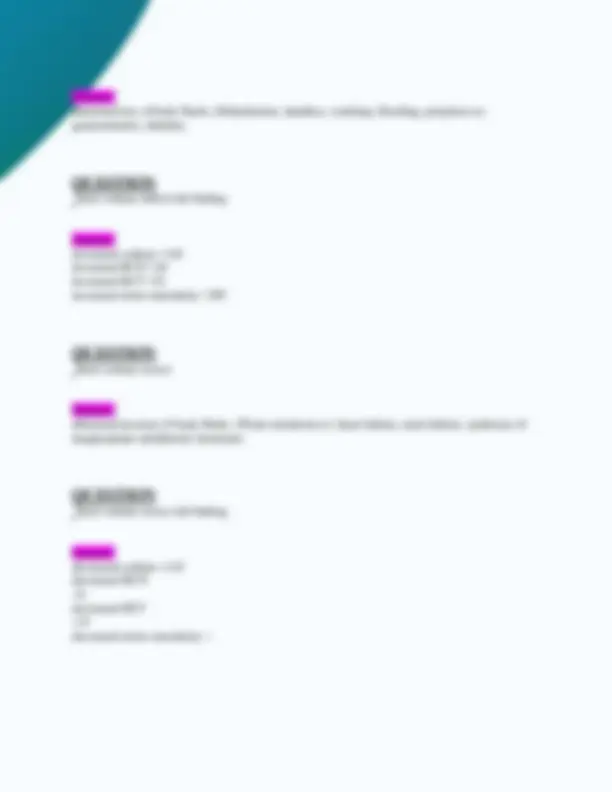


Study with the several resources on Docsity

Earn points by helping other students or get them with a premium plan


Prepare for your exams
Study with the several resources on Docsity

Earn points to download
Earn points by helping other students or get them with a premium plan
Community
Ask the community for help and clear up your study doubts
Discover the best universities in your country according to Docsity users
Free resources
Download our free guides on studying techniques, anxiety management strategies, and thesis advice from Docsity tutors
QUESTION ABG Answer: ph; 7.35-7.45 co2; 35-75 hco3; 22-26 po2; 80-100 QUESTION normal values for usg with a patient with fluid volume excess Answer: 0/15-0/30 QUESTION what will you see with hypocalcemia Answer: trousseau's sign QUESTION decrease potassium
Typology: Exams
1 / 14

This page cannot be seen from the preview
Don't miss anything!









Answer: ph; 7.35-7. co2; 35 - 75 hco3; 22 - 26 po2; 80 - 100
normal values for usg with a patient with fluid volume excess Answer: 0/15-0/
what will you see with hypocalcemia Answer: trousseau's sign
decrease potassium
Answer: Aldactone (spironolactone)
signs with hyponatremia Answer: confused with bounding pulse
List of patients which of the patients is at risk for fluid volume Imbalance (SATA) Answer: not kidney not heart not diarrhea
group of patients most at risk for hypokalemia Answer: wound drainage pt
Hypomagnesemia (SATA) Answer: Muscle & heart contractions, deep tendon reflexes, confusion (NO SELECT TACHY OR HYPERTENSION)
Hypercalcemia seen in what types of patients? Answer: Myeloma (multiple myeloma)
Severe anemia s/sx Answer: Pallor, tachycardia over 100 bpm
Hodgkin's Lymphoma: Answer: Red-Sternberg cells
Heparin-induced thrombocytopenia (HIT) Answer: Platelets will be under 100,
What drink do you give with Ferrous Sulfate? Answer: Take with pineapple juice
Taking ferrous sulfate, liquid version, what requires further teaching? Answer: avoid orange juice
What do you ask a patient with hemophilia? Answer: Any joint pain, color change in stool, bruise easily.
Four patients which at most risk for aplastic anemia Answer: Patient with history of chemotherapy
Pt with leukemia s/x Answer: Fever over 100.4 they're immunocompromised.
Pertussis (TDAP) Answer: Droplet precaution
Hyper kalemia. high potassium. Answer:
poor renal function, metabolic shifts, increased PO intake. O; irregular pulse muscle weakness abnormal pain paresthesia diarrhea vomiting confusion or irritability.
hypo kalemia. low potassium Answer: <3. Gi. Losses, through noxious nasogastric suctioning, diarrhea, use of diuretics, diaphoresis, wound drainage. O; constipation
hypercalcemia. Answer: <10. multiple myeloma. destruction of bone causes calcium loss from bones. O; fatigue, lethargy, confusion, weakness, depressed reflexes, seizures, and cardia dysrhythmias.
hypocalcemia Answer:
O; tetany: nerve sustained muscle contraction - BP cuff chevosks sign - tapping on cheeck
Hyperphosphaemia Answer:
4.5. acute kidney injury/chronic kidney disease. treatment options; administer phosphorous binder; helps prevent body from absorbing the phosphorus from food consumed.
Hypermagnesemia Answer:
renal failure. O; lethargy drowsiness muscle weakness urinary retention nausea, vomiting. poor deep tendon reflexes bradycardia hypotension resp/cardiac arrest
Hypomagnesemia Answer: <1. resembles hypocalcemia; chvoseks/trousseaus. Malnutrition and increased GI or kidney losses. Neuro muscular and CNS irritability O; confusion.
Patient with COPD s/sx: Answer: Anteroposterior diameter of chest increased
Answer: CAN ONLY REPORT, NOT TEACH
Patient needs further teaching for home O2 therapy: Answer: incorrect answer mentions tubing.
Patient with cystic fibrosis: Answer: Use chest vest/jacket to break up the mucus
Answer: 5mm, immunocompromised, recent organ transplant
Isoniazid for TB allergic reaction: Answer: Check liver enzyme labs monthly
Patient was recently exposed to TB: Answer: Sputum culture given looking for AFB (acid-fast bacillus)
Patient coming in with URI: Answer: early symptoms, restlessness.
Answer: 5,000-10,
red blood cells (erythrocytes) Answer: 4.2-6.1 million
Potassium (K+) normal range Answer: 3.5-5.
Calcium normal range Answer: 8.5-10.
Sodium normal range Answer: 135 - 145
fluid volume deficit
Answer: abnormal loss of body fluids. (Dehydration, diarrhea, vomiting, bleeding, polyuria) ex: gastroenteritis, diabetes.
fluid volume deficit lab finding Answer: increased sodium > increased BUN > increased HCT > increased urine osmolarity >
fluid volume excess Answer: abnormal increase of body fluids. (Water retention) ex: heart failure, renal failure, syndrome of inappropriate antidiuretic hormone)
fluid volume excess lab finding Answer: decreased sodium < decreased BUN < decreased HCT < decreased urine osmolarity <